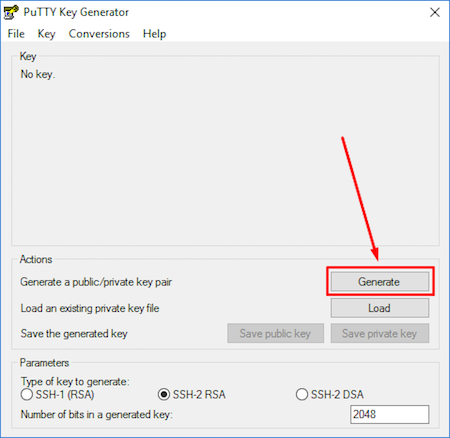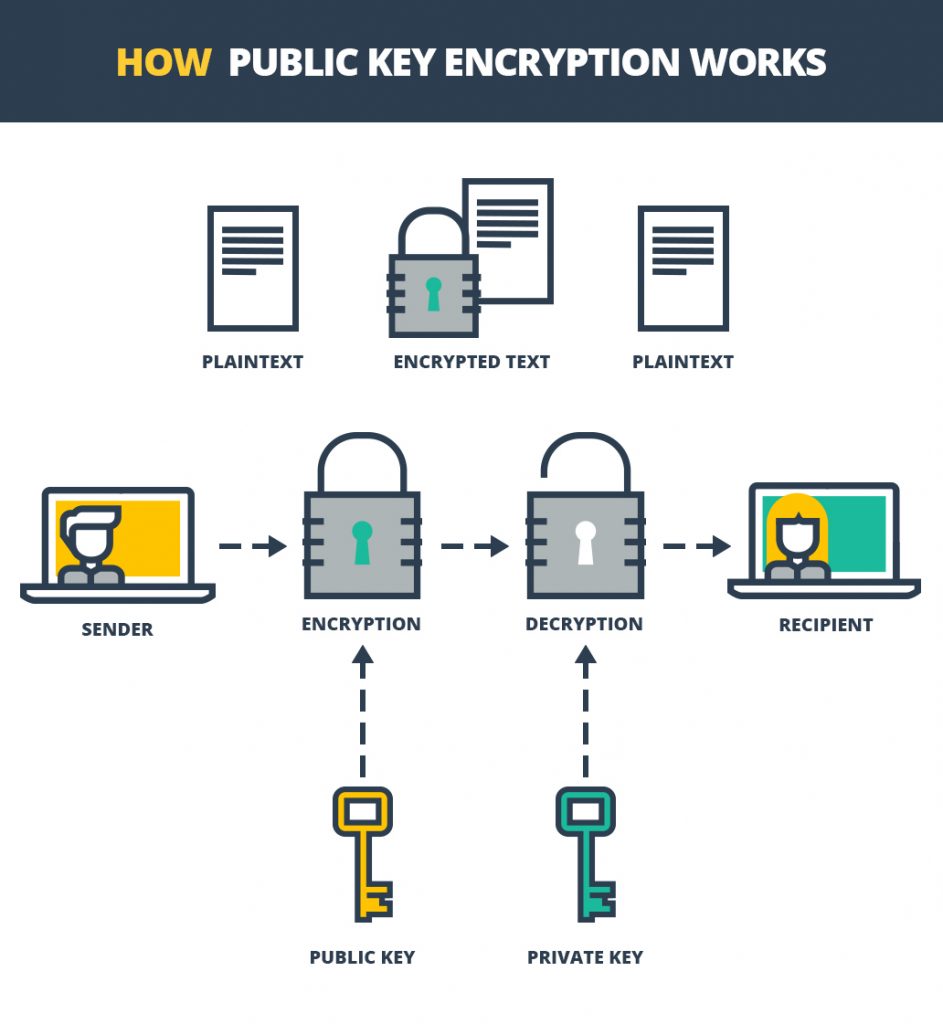Is A Public Key Randomly Generated
- Is A Public Key Randomly Generated Account
- Public Key Definition
- Randomly Generated Password
- Is A Public Key Randomly Generated Key
- Is A Public Key Randomly Generated Account
Key generation is the process of generating keys in cryptography. A key is used to encrypt and decrypt whatever data is being encrypted/decrypted.
A device or program used to generate keys is called a key generator or keygen.
Generation in cryptography[edit]
Generate online private and public key for ssh, putty, github, bitbucket Save both of keys on your computer (text file, dropbox, evernote etc)!!! The generated keys are RANDOM and CAN'T be restored. You can create keys without creating an account. Instead of encrypting the AES key, you should prefer RSA-KEM. Generate a random element in 1.n with a good random source, then use a Key Derivation Function like HKDF and use this AES key. Encrypt the random element with the public key. Send both to the receiver. In this case, RSA don't need a padding. – kelalaka Jan 1 at 13:44. This private key is converted to a public key by performing an EC point multiplication with the curve's base point. The result is an (x,y) coordinate pair, which constitutes the public key. Finally, RIPEMD160(SHA256(pubkey)), where pubkey is a serialization of those coordinates, is computed, and encoded in base58, together with a checksum. This becomes the address.
Modern cryptographic systems include symmetric-key algorithms (such as DES and AES) and public-key algorithms (such as RSA). Symmetric-key algorithms use a single shared key; keeping data secret requires keeping this key secret. Public-key algorithms use a public key and a private key. The public key is made available to anyone (often by means of a digital certificate). A sender encrypts data with the receiver's public key; only the holder of the private key can decrypt this data.
A public key/private key keypair, is generated by using special programs according to the use of the keypair. If it’s ssh, it is described in other answers. If it’s a cryptocurrency keypair, every cryptocurrency has it’s own software to do this. Before using the key, however, any recipient needs assurance that the key is indeed the sender's public key and has not been erroneously generated, fraudulently generated or changed. To accomplish this, clients of public-key encryption support a class of trusted third parties, called certification authorities.
Since public-key algorithms tend to be much slower than symmetric-key algorithms, modern systems such as TLS and SSH use a combination of the two: one party receives the other's public key, and encrypts a small piece of data (either a symmetric key or some data used to generate it). The remainder of the conversation uses a (typically faster) symmetric-key algorithm for encryption.
The private key is usually not generated first. In general, they're generated at the same time. For some schemes, the public key can be derived from the private key, but this doesn't always hold, and that will depend on specific properties of the particular public-key scheme.
Computer cryptography uses integers for keys. In some cases keys are randomly generated using a random number generator (RNG) or pseudorandom number generator (PRNG). A PRNG is a computeralgorithm that produces data that appears random under analysis. PRNGs that use system entropy to seed data generally produce better results, since this makes the initial conditions of the PRNG much more difficult for an attacker to guess. Another way to generate randomness is to utilize information outside the system. veracrypt (a disk encryption software) utilizes user mouse movements to generate unique seeds, in which users are encouraged to move their mouse sporadically. In other situations, the key is derived deterministically using a passphrase and a key derivation function.
Many modern protocols are designed to have forward secrecy, which requires generating a fresh new shared key for each session.
Classic cryptosystems invariably generate two identical keys at one end of the communication link and somehow transport one of the keys to the other end of the link.However, it simplifies key management to use Diffie–Hellman key exchange instead.
The simplest method to read encrypted data without actually decrypting it is a brute-force attack—simply attempting every number, up to the maximum length of the key. Therefore, it is important to use a sufficiently long key length; longer keys take exponentially longer to attack, rendering a brute-force attack impractical. Currently, key lengths of 128 bits (for symmetric key algorithms) and 2048 bits (for public-key algorithms) are common.
Generation in physical layer[edit]

Wireless channels[edit]
A wireless channel is characterized by its two end users. By transmitting pilot signals, these two users can estimate the channel between them and use the channel information to generate a key which is secret only to them.[1] The common secret key for a group of users can be generated based on the channel of each pair of users.[2]
Optical fiber[edit]
A key can also be generated by exploiting the phase fluctuation in a fiber link.[clarification needed]
See also[edit]
- Distributed key generation: For some protocols, no party should be in the sole possession of the secret key. Rather, during distributed key generation, every party obtains a share of the key. A threshold of the participating parties need to cooperate to achieve a cryptographic task, such as decrypting a message.
References[edit]
- ^Chan Dai Truyen Thai; Jemin Lee; Tony Q. S. Quek (Feb 2016). 'Physical-Layer Secret Key Generation with Colluding Untrusted Relays'. IEEE Transactions on Wireless Communications. 15 (2): 1517–1530. doi:10.1109/TWC.2015.2491935.
- ^Chan Dai Truyen Thai; Jemin Lee; Tony Q. S. Quek (Dec 2015). 'Secret Group Key Generation in Physical Layer for Mesh Topology'. 2015 IEEE Global Communications Conference (GLOBECOM). San Diego. pp. 1–6. doi:10.1109/GLOCOM.2015.7417477.
Key generation is the process of generating keys for cryptography. The key is used to encrypt and decrypt data whatever the data is being encrypted or decrypted.
Modern cryptographic systems include symmetric-key algorithms (such as DES and AES) and public-key algorithms (such as RSA). Symmetric-key algorithms use a single shared key; keeping data secret requires keeping this key secret. Public-key algorithms use a public key and a private key. The public key is made available to anyone (often by means of a digital certificate). A sender will encrypt data with the public key; only the holder of the private key can decrypt this data.
Is A Public Key Randomly Generated Account
Since public-key algorithms tend to be much slower than symmetric-key algorithms, modern systems such as TLS and its predecessor SSL as well as the SSH use a combination of the two in which:
- One party receives the other's public key, and encrypts a small piece of data (either a symmetric key or some data that will be used to generate it).
- The remainder of the conversation (the remaining party) uses a (typically faster) symmetric-key algorithm for encryption.
Public Key Definition
The simplest method to read encrypted data is a brute force attack–simply attempting every number, up to the maximum length of the key. Therefore, it is important to use a sufficiently long key length; longer keys take exponentially longer time to attack, making a brute force attack invisible and impractical.
Currently, commonly used key lengths are:
- 128-bits for symmetric key algorithms.
- 1024-bits for public-key algorithms.
Key generation algorithms[changechange source]
In computer cryptography keys are integers. In some cases keys are randomly generated using a random number generator (RNG) or pseudorandom number generator (PRNG), the latter being a computeralgorithm that produces data which appears random under analysis. Some types the PRNGs algorithms utilize system entropy to generate a seed data, such seeds produce better results, since this makes the initial conditions of the PRNG much more difficult for an attacker to guess.
In other situations, the key is created using a passphrase and a key generation algorithm, using a cryptographic hash function such as SHA-1.
Related pages[changechange source]
Randomly Generated Password
- Distributed key generation: For some protocols no party should be in the sole possession of the secret key. Rather, during distributed key generation every party obtains a share of the key. A threshold of the participating parties need to work together in order to achieve a cryptographic task, such as decrypting a message.

Is A Public Key Randomly Generated Key
References[changechange source]
Is A Public Key Randomly Generated Account
Then, whenever a private key is needed for authentication, ssh-agent will automatically retrieve your local user’s private key and pass it to your SSH client. Windows openssh key location.